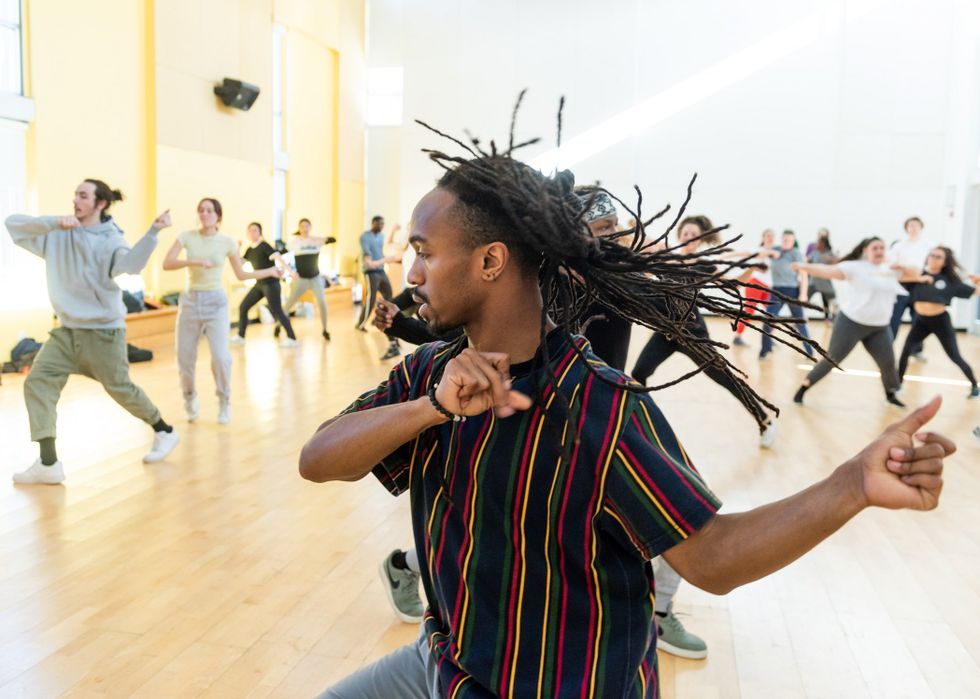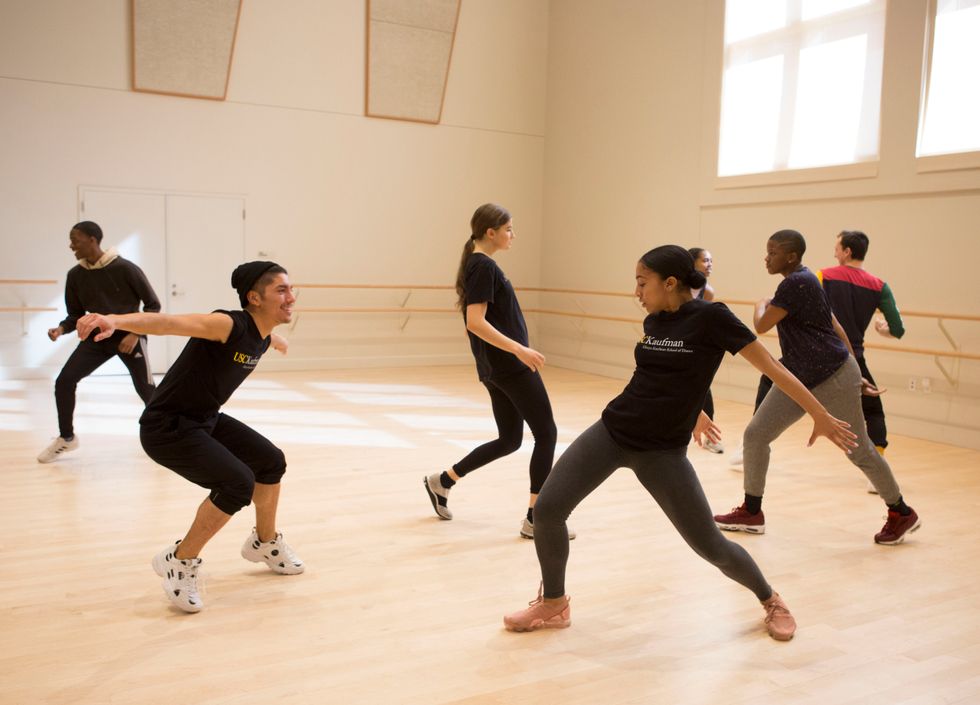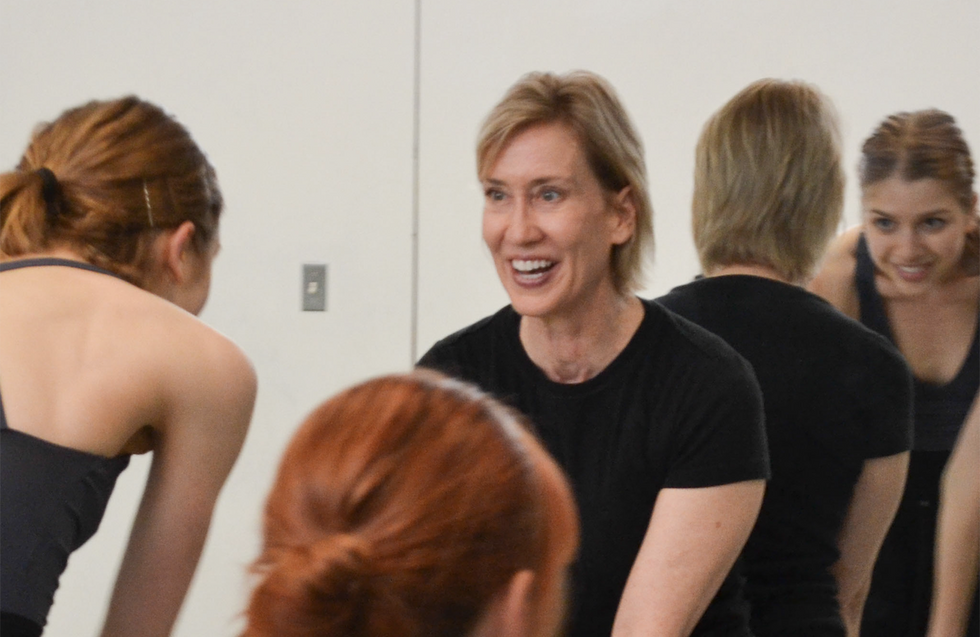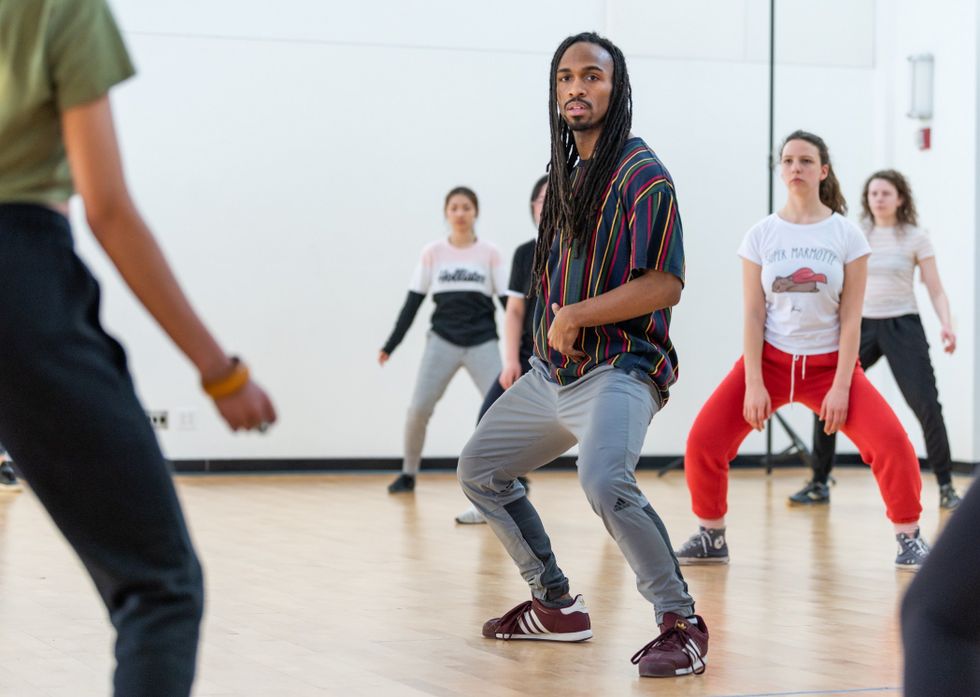College Dance Curriculums Are Finally Catching Up to 2019
Though the first dance degree was awarded more than 85 years ago, the focus of dance programs in higher education has stayed, for the most part, pretty much the same: Western dance forms dominate curriculums across the country, with ballet and modern classes reigning particularly supreme.
Over the last several years, however, some colleges have begun thinking critically about what kind of dance they’re teaching—and how they teach it. They’re ushering in a new wave of dance in higher ed, with the hope that their approach—bringing African diaspora and urban forms to the fore, forging connections with other fields, degendering ballet—might be a catalyst for others.

Karl Rabe, Courtesy Bard
Bard College: Giving diaspora dance the weight it deserves
As director of Bard’s dance program, Maria Simpson has made partnerships a hallmark of the curriculum—first by teaming up with the Bill T. Jones/Arnie Zane Company, then the Trisha Brown Dance Company, and, now, with the American Dance Festival. But this partnership, which began last year, is less about learning from a specific company and more about turning the higher education curriculum model completely on its head.
With ADF dean Leah Cox (who doubles as an associate professor at Bard), Simpson is giving equal weight to African diaspora dance, arguing that it’s had as much influence on modern dance as its more-frequently-lauded counterpart, Western European dance.
“Dance is not Eurocentric,” Cox explains. “We only teach it as so. The entire academy is Eurocentric. It was originally created for white men. When women got there, it was very ‘What are you doing here?’ And for people of color, it was ‘What are you doing here?’ ”
The new approach took form in four teaching artists specifically selected for their ability to decolonize the classroom: hip-hop artist Quilan “Cue” Arnold, Bessie Award–winning formalist choreographer Beth Gill, b-girl Ephrat “Bounce” Asherie and choreographer Nia Love, who explores blackness and intersectionality in her work.
Arnold’s hip-hop class reached maximum capacity almost immediately. “It’s the first time hip hop has been offered, and I had to cut off enrollment,” says Cox. “So many students emailed me, saying ‘This really matters to me. Thank you so much for offering this.’ ”
For Simpson, the biggest evolution occurred at the interpersonal level. “There’s so much more comfort and excitement around learning across cultural lines, across gender lines, across color lines,” she says. “It feels so much more like a reflection of our society.”

Rose Eichenbaum, courtesy USC
USC: Creating multi-hyphenate artists
When the 33 dancers in University of Southern California Glorya Kaufman School of Dance’s inaugural class walked across the graduation stage in May, they each had a whopping 132 credit hours under their belts.
One senior earned not only his BFA in dance with a minor in nonprofits, philanthropy and volunteerism (and a contract with Ballet Hispánico) but also completed his master’s in public administration. Another is a computer engineering minor who is now working to create smartphone applications for choreography even as she performs with Kybele Dance Theater.
Despite USC’s intense dance curriculum, vice dean and director Jodie Gates isn’t solely focused on producing performers. Instead, she wants to create leaders—performers, yes, but also choreographers, arts administrators, even future curriculum designers.
“This program is not for the faint of heart,” says Gates. “It’s designed to allow dancers to minor or double-major.”
The department teaches students to be well-rounded in the studio, too. “We’re the only BFA program that requires hip hop,” she says. Gates wants students to be multilingual artists, and cites hip hop’s far-reaching influence, even in ballet and contemporary dance (“The articulation of the spine!” she gushes). “Hip hop, to me, should be the new normal,” she says.
Gates says this curriculum has shaped students to be incredibly articulate—both physically and as human beings. “They have tools to succeed in many different leadership positions—not just as a soloist onstage.”

Courtesy Boston Conservatory at Berklee
Boston Conservatory at Berklee: Degendering ballet class
Cathy Young, executive director of Boston Conservatory at Berklee, already had change on her mind last year when a student approached her about how ballet classes were titled. The conservatory took swift action, renaming classes to make it clear that anyone could enroll.
The course catalog now includes “Constructed Gender Identities in Classical Ballet: Ballet Technique: Men’s Technique,” along with similarly titled pointe and partnering classes.
“The skill set associated with men’s technique—an emphasis on ballon and strength, for example—those are skills other people might want to learn,” Young points out. “Why would we say that only people who identify as male get to learn those skills? At the same time, we want our students who identify as male, who want to understand how it feels to dance on pointe, to get that technical training.”
Though she suspects this shift may have caused initial concerns for some faculty regarding the traditions of classical ballet, Young says the faculty is fully committed to creating a curriculum that is diverse and inclusive. “We cannot, as a higher ed institution, offer a curriculum that appears to be geared to only one gender category,” she says.
But this change serves another purpose, too. “The new course titles make a statement about examining and contextualizing the presentation and interpretations of gender embedded in the form,” says Young. “Ballet, like any other dance form, reflects a particular time and place in history, and we want our students to know that. We have students who identify as male, female, nonbinary, transgender—and all of them need to be able to determine for themselves how they interface with ballet.”
The response has been affirming, she reports. “When we announced this, we got so much positive response,” says Young. “We had alumni saying, ‘I’m so proud to have gone to this school.’ ” She hopes the new curriculum will set a precedent. “I think people in the field will realize ‘This is a new idea of what a conservatory can be,’ ” she says.




